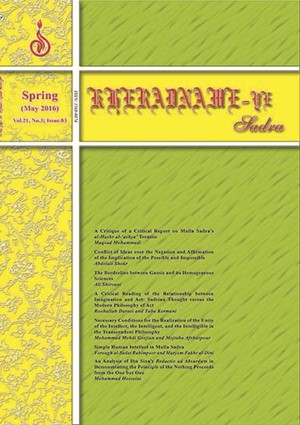-
-
List of Articles
-
Open Access Article
1 - سرمقاله
Seyyed Mohammad Khamenei -
Open Access Article
2 - A Critique of a Critical Report on Mulla Sadra’s al-Hashr al-‘ashya’ Treatise
Maqsud Mohammadi -
Open Access Article
3 - Conflict of Ideas over the Negation and Affirmation of the Implication of the Possible and Impossible
Abdolali Shokr -
Open Access Article
4 - The Borderline between Gnosis and its Homogeneous Sciences
Ali Shirvani -
Open Access Article
5 - A Critical Reading of the Relationship between Imagination and Act: Sadrian Thought versus the Modern Philosophy of Act
Roohallah Daraei Tuba Kermani -
Open Access Article
6 - Necessary Conditions for the Realization of the Union of the Intellect, the Intelligent, and the Intelligible in the Transcendent Philosophy
Mohammad Mehdi Gorjian Mojtaba Afsharpour -
Open Access Article
7 - Simple Human Intellect in Mulla Sadra
Furugh al-Sadat Rahimpoor Maryam Fakhr al-Dini -
Open Access Article
8 - An Analysis of Ibn Sina’s Reductio ad Absurdum in Demonstrating the Principle of Nothing Proceeds from the One but One
Mohammad Hosseini
-
The rights to this website are owned by the Raimag Press Management System.
Copyright © 2017-2026







